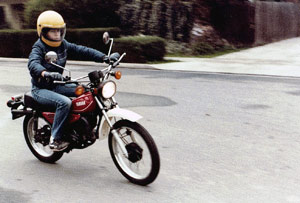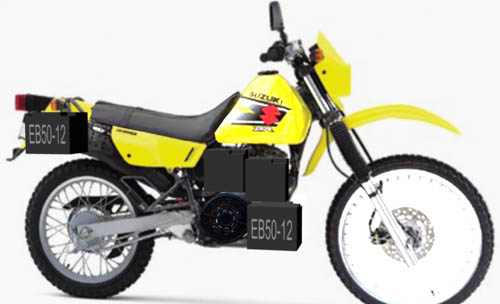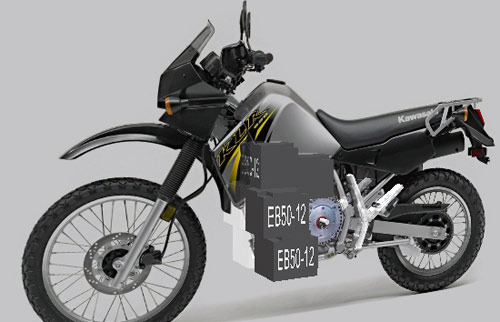Design - Frame

Cruising on the DT-100 around 1985.
Sportbike styling was not the original plan for this project. After some initial research, I knew that I'd be going with a Mars ME0709 brushed DC motor, based on it's power capabilities and price, and though I'd be using lead-acid batteries of around 40 to 50 amp-hour capacity. In choosing the frame to use, size and weight capacity were going to be key factors. I didn't want to have to lengthen the frame like John Bidwel's ElChopper conversions, as I didn't want to change frame geometry and affect handling. Also, the ME0709 was too big to hang outside on the swing-arm like the ETek motors used on Bidwel's ElNinja conversions. Style wise, I wanted to go dual-sport. I learned to ride on a DT-100 and that was how I got around town when I was in high school. Design started with fitting 3D models of the parts around accurately scaled photographs of the frame candidates.

In 1999 my wife and I picked up a Suzuki DR-200SE, to haul around on the back of an RV. It's a great lightweight bike for getting around town, so it was a natural first choice (not ours, I'd have looked for one with a blown engine) for a conversion. After some quick mock-ups I realized that there just wasn't room for all that lead. Since then we've managed to collect a couple more DR200SEs. It never hurts to have a spare, and they get over 80mpg.

Kawasaki's KLR650 seemed a lot more promising. There's definitely more room to pack in batteries and the suspension loading limits are a lot higher. Problem is, like the DR200, there aren't a lot of these floating around at bargain-basement prices with blown engines, and keeping costs low was a project goal.

The final choice ended up being a Kawasaki Ninja 250, primarily because one was available at a dirt-cheap price on Craig's list. In fact it was so cheap that it more than paid for itself by selling off unneeded parts like the carburetors and engine. The engine and transmission case of the Ninja 250 actually provide support to its frame, so the first change made - that other design factors would have to take into consideration - was adding a pair of struts to either side of the frame, providing strength so that it would not bend at its weak point (see red arrow). This was serious welding, and thankfully my neighbor is a very skilled retired welder. He TIG welded in the struts for me and his welds actually came out cleaner than Kawasaki's original factory work.
Continue to Lead Acid Design...
